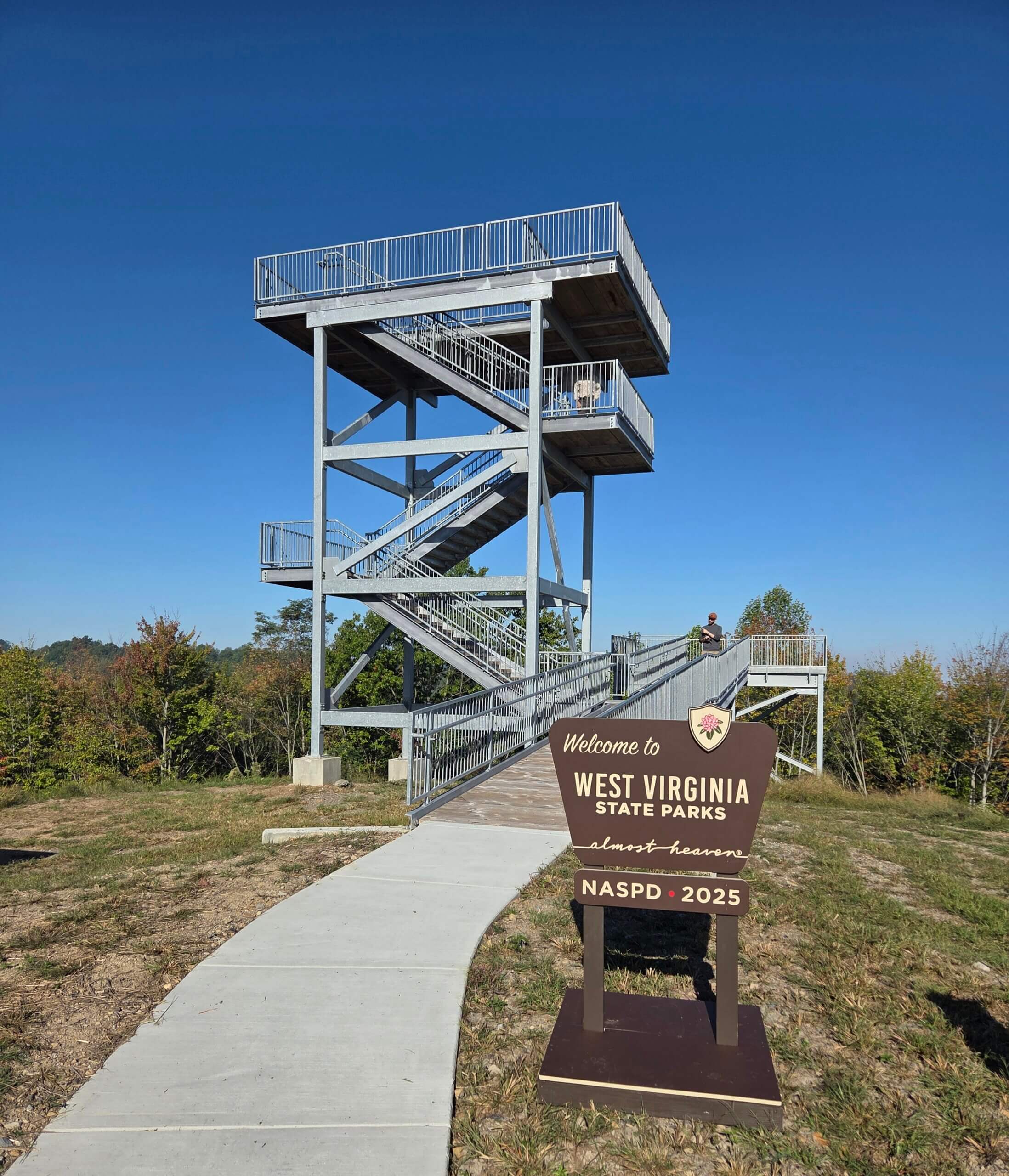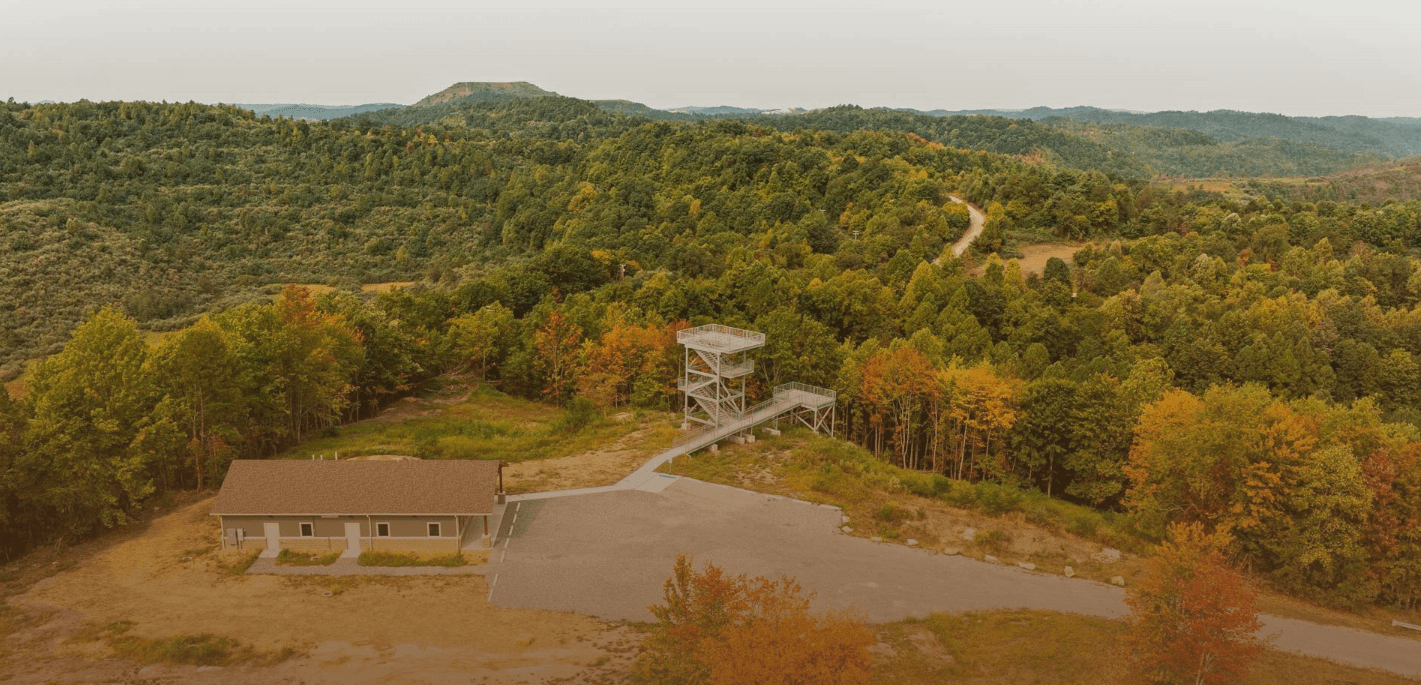They gathered atop a natural overlook in the heart of West Virginia’s colorful elk country to dedicate a new opportunity for visitors to see the state’s newest big game species. Among those attending the ribbon-cutting ceremony was a small but invested group of Rocky Mountain Elk Foundation volunteers and members.
“We are excited to finally open this viewing platform and provide a new way to learn about West Virginia’s growing elk herd and experience our state’s natural beauty,” said West Virginia Division of Natural Resources (WVDNR) Director Brett McMillion. “I want to thank everyone who helped bring this project to life. We believe this facility will attract and benefit wildlife enthusiasts, researchers and tourists alike, contribute significantly to the local economy and support our ongoing elk management efforts.”
 “I’m proud to be the lead sponsor. I’m proud of what the DNR has done and the Rocky Mountain Elk Foundation. I’m also thankful to former Governor Justice for signing off on the AML money for this project right here,” State Sen. Rupie Phillips told West Virginia MetroNews.
“I’m proud to be the lead sponsor. I’m proud of what the DNR has done and the Rocky Mountain Elk Foundation. I’m also thankful to former Governor Justice for signing off on the AML money for this project right here,” State Sen. Rupie Phillips told West Virginia MetroNews.
The multi-level tower features several viewing areas including an elevated platform. The nearby education center below will have conference rooms, offices and other amenities for visitors, volunteers, researchers and staff, including 3,300 square feet of space to support the state’s elk population.
The dedication is just the latest in a series of actions to support wild, free-ranging elk, and RMEF has had a hand in many of those. In 2015, RMEF and other organizations supplied funding to create the Tomblin Wildlife Management Area, site of the elk viewing tower. The following year, RMEF provided logistical and technical support for the original capture efforts of 24 elk in Kentucky at Land Between the Lakes National Recreation Area. Two years later, RMEF assisted efforts to capture and transport elk from Arizona. And since, it helped with habitat work.
Today, WVDNR estimates there are approximately 130 elk in the state with at least 60 native elk calf births.
(Photo credit: Rocky Mountain Elk Foundation & West Virginia Division of Natural Resources)